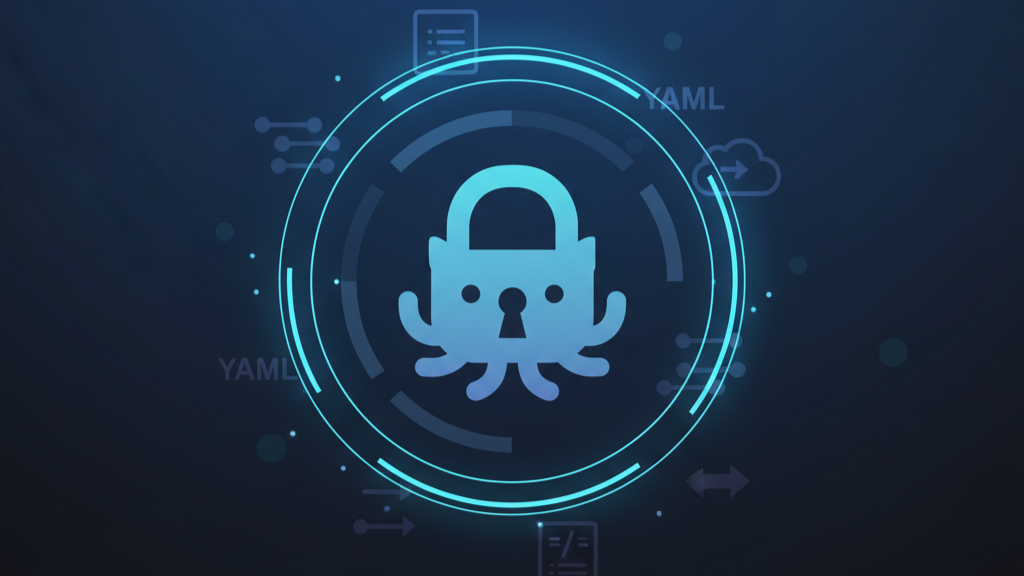GitHub Organizational Access and Secrets Management: Hardening at Scale
by Dan.C

GitHub Organizational Access and Secrets Management: Hardening at Scale
Table of Contents
- Introduction
- What is Access Control in GitHub Organizations?
- 🚀 GitHub Org Security Playbook (Step-by-Step)
- Designing Teams and Roles for Least Privilege
- Enforcement: 2FA, SSO, and Branch Protection
- Automating Access Control with CLI, API, and Terraform
- Secrets Management Best Practices
- Using OIDC Instead of Static Secrets
- Auditing and Monitoring with the Audit Log API
- Security Baseline Checklist
- Conclusion
- Related Posts
Introduction
GitHub is the backbone of many organizations’ development lifecycle. But without hardened access control and secrets management, it quickly becomes the weakest link in your DevSecOps chain.
This post provides practical best practices with real CLI, API, and Terraform configurations, showing how to build a GitHub org security baseline that can scale.
What is Access Control in GitHub Organizations?
At its core, access control is about answering one simple question:
👉 “Who is allowed to do what inside my GitHub organization?”
GitHub provides multiple layers of access control that work together. Think of it like doors in a building — some people can only enter the lobby, some can access specific floors, and only a few hold the master keys.
🔑 Key Building Blocks
- Organization Roles
- Owner → Full control (root-level access). Use sparingly.
- Member → Default role for most developers.
- Security Manager → Security-focused visibility.
- Billing Manager → Manages billing, no code access.
- Teams
- Group members logically (project, function, environment).
- Assign repo permissions at the team level, not per user.
- Repository Permissions
- Read → View only.
- Triage → Manage issues/PRs without code changes.
- Write → Push commits, merge PRs.
- Maintain → Manage repo settings.
- Admin → Full repo control.
- Outside Collaborators
- Direct repo access without org membership. Useful for contractors, but risky if unmanaged.
- Machine Identities
- GitHub Apps (preferred), fine-grained PATs, Actions GITHUB_TOKEN, and OIDC (recommended for cloud access).
🚫 Common Anti-Patterns (What NOT to Do)
- Giving every team Write access “just in case.”
- Using classic PATs with broad scopes.
- Storing secrets inside private repos.
- Assigning too many Owners.
- Forgetting to remove outside collaborators after contracts end.
🚀 GitHub Org Security Playbook (Step-by-Step)
If you’re starting with a brand new GitHub org, here’s a practical workflow you can follow.
1. Initial Org Setup
- Enforce 2FA for all users.
- Require SSO (Enterprise) for central IdP control.
- Limit Owners to 2–3 trusted people.
- Assign a Security Manager role for oversight.
2. Team & Role Design
- Create functional teams (
backend,frontend,devops,security). - Map repos to teams, not individuals.
- Use least privilege → e.g., devs =
write, security team =adminonly where needed.
3. Repository Hardening
- Apply branch protection rules (reviews, status checks, no force-push).
- Enforce CODEOWNERS for critical repos.
- Disable repo forking for sensitive projects.
4. Secrets & Machine Identities
- Ban classic PATs; enforce fine-grained PATs or OIDC.
- Store secrets in org/repo secrets, not in code.
- Rotate secrets regularly (ideally automated).
5. Automation
- Use Terraform GitHub Provider to codify org/repo setup.
- Run GitHub CLI/API audits for quick checks.
- Detect drift between Terraform config and actual org state.
6. Monitoring & Audit
- Export audit logs daily (API → SIEM).
- Alert on new owners, PAT creation, or external collaborator additions.
- Do quarterly access reviews with team leads.
Designing Teams and Roles for Least Privilege
- Create teams by function (
backend,frontend,devops,security). - Apply
triageorreadwhere possible. - Grant
writeonly where absolutely needed. - Use
CODEOWNERSto enforce reviews. - Audit owners/admins monthly.
CLI Example:
gh api -X PUT \
/orgs/ORG/teams/security/memberships/<USERNAME> \
-f role=member
Enforcement: 2FA, SSO, and Branch Protection
- Require 2FA (GitHub docs)
- Enforce SAML SSO to your IdP.
- Branch protections: PR reviews, status checks, linear history.
- CODEOWNERS: sensitive paths require explicit review.
Automating Access Control with CLI, API, and Terraform
Manual clicks don’t scale. Automation ensures consistency, auditability, and compliance.
What We Want to Achieve
- Codify policies (no tribal knowledge).
- Prevent privilege creep.
- Enable fast onboarding/offboarding.
- Demonstrate compliance (“who has access to what”).
Tools
- GitHub CLI (
gh) → scripting and audits. - REST/GraphQL API → deeper integrations.
- Terraform GitHub Provider → codify org/repo config in Git, use PR reviews for changes.
Example: Terraform team + repo assignment
resource "github_team" "security" {
name = "security"
description = "Security team"
}
resource "github_team_repository" "security_repo_access" {
team_id = github_team.security.id
repository = "critical-service"
permission = "admin"
}
Secrets Management Best Practices
- Enable secret scanning + push protection org-wide.
- Use org/environment secrets with narrow scopes.
- Rotate secrets every 90 days (automate if possible).
- Never rely on private repos for secret storage.
Using OIDC Instead of Static Secrets
Replace static cloud credentials with short-lived OIDC tokens.
AWS Example
permissions:
id-token: write
contents: read
jobs:
deploy:
runs-on: ubuntu-latest
steps:
- uses: actions/checkout@v4
- name: Configure AWS creds via OIDC
uses: aws-actions/configure-aws-credentials@v4
with:
role-to-assume: arn:aws:iam::123456789012:role/GitHubActionsRole
aws-region: eu-central-1
Auditing and Monitoring with the Audit Log API
Get last 100 audit events
curl -H "Authorization: Bearer $GITHUB_TOKEN" \
"https://api.github.com/orgs/ORG/audit-log?per_page=100&include=web,repo,team"
Monitor for:
- New org owners.
- PATs with broad scopes.
- Outside collaborator additions.
Security Baseline Checklist
- Enforce 2FA and SSO
- Limit Owners to 2–3 max
- Codify permissions with Terraform
- Apply branch protection + CODEOWNERS
- Enable secret scanning org-wide
- Replace static keys with OIDC
- Audit roles & secrets monthly
- Export audit logs daily
Conclusion
GitHub org security isn’t a one-time setup — it’s a continuous process. By combining least privilege, secrets hygiene, and automation, DevSecOps teams can stay ahead of attackers and scale securely.
Related Posts
The cost of hardening today is less than the cost of recovering tomorrow. — Dan.C
tags: github - devsecops - access-control - secrets-management - org-security - ci-cd - GitHub Security